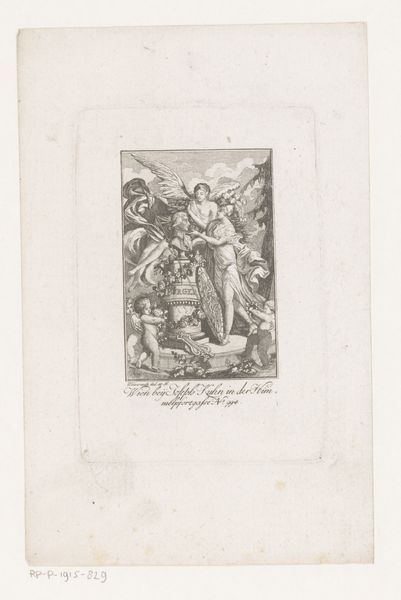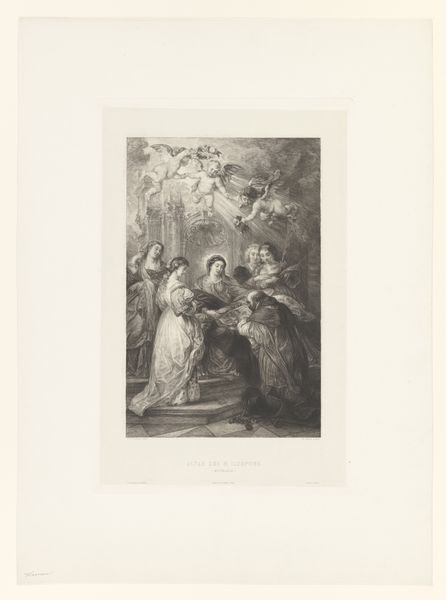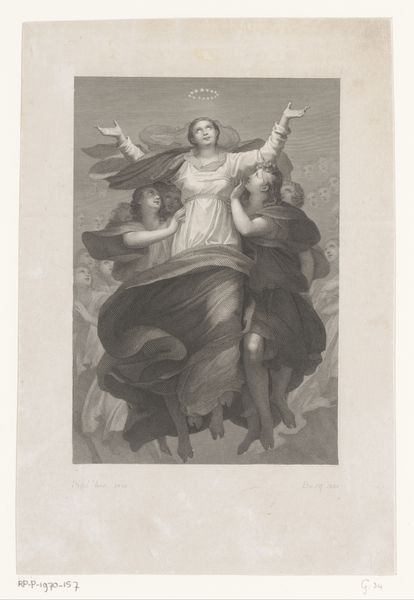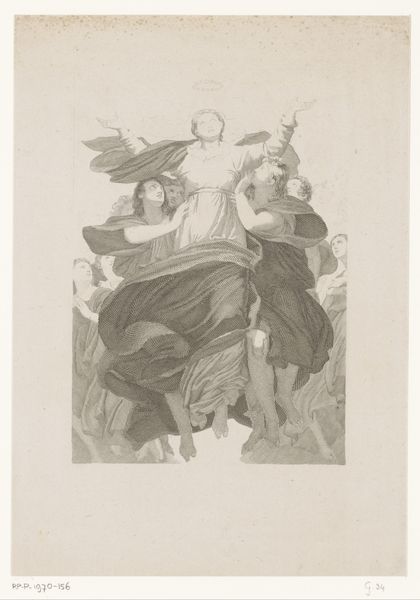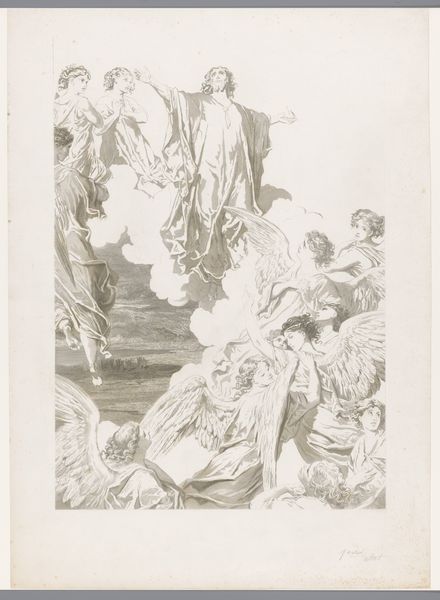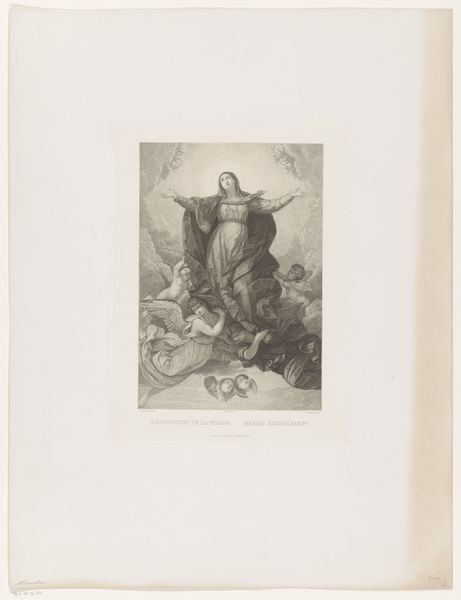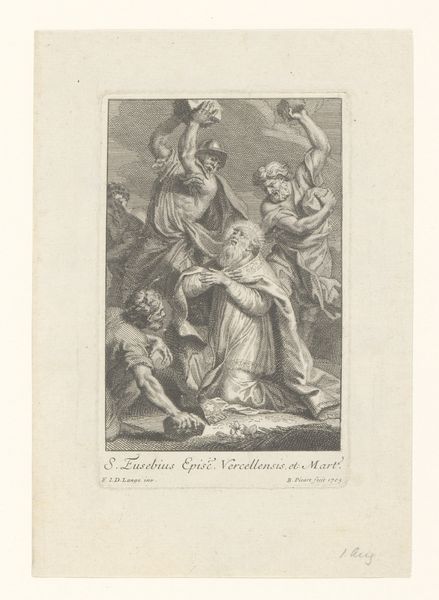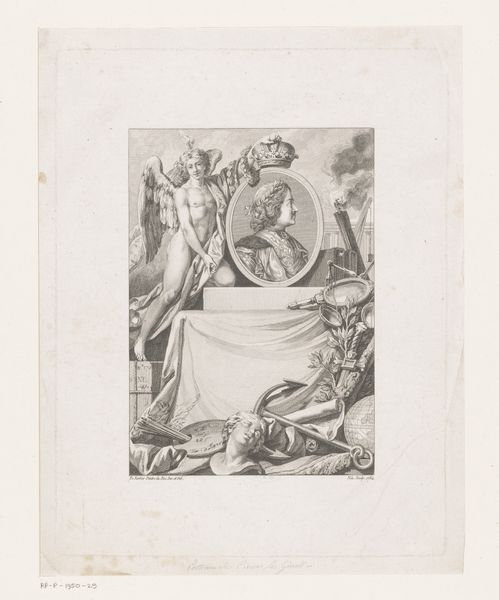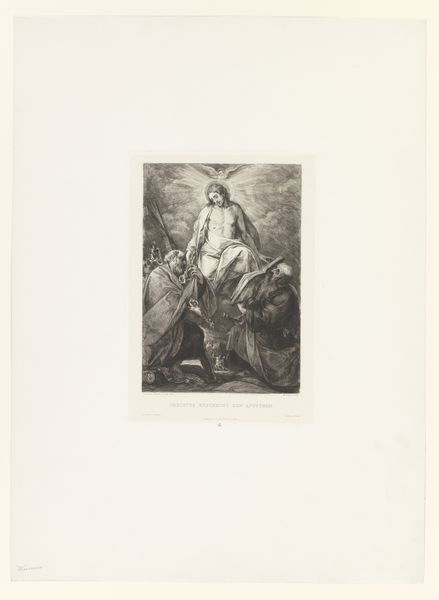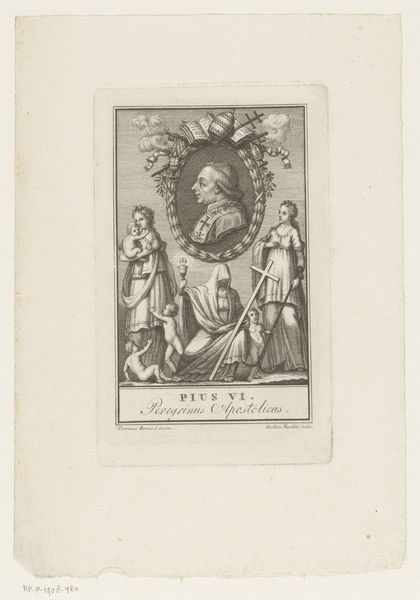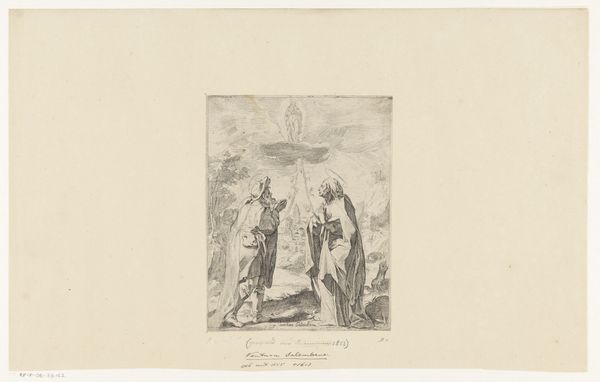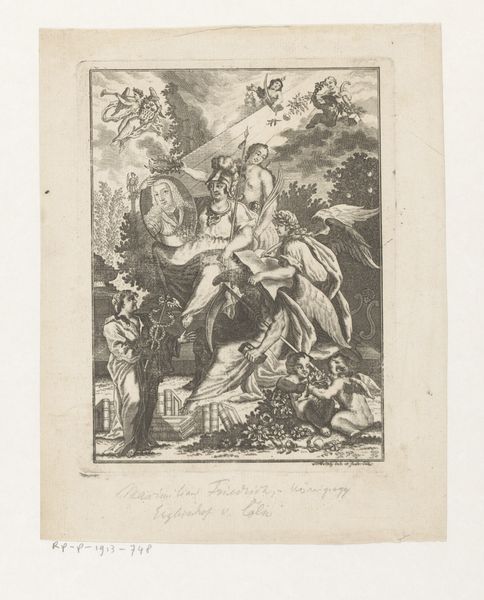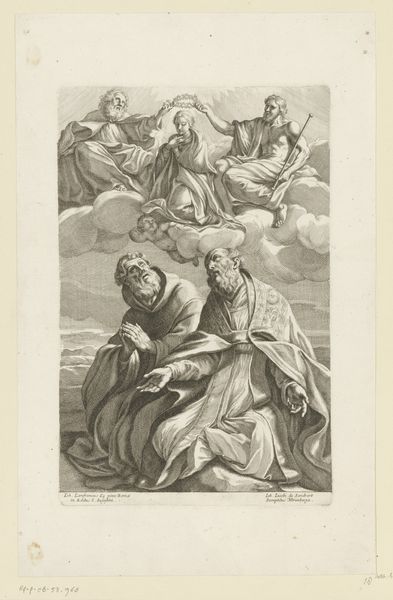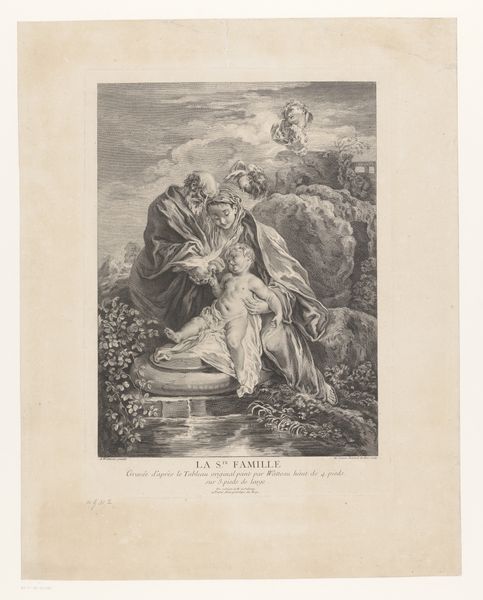
drawing, print, engraving
#
drawing
# print
#
pencil sketch
#
figuration
#
history-painting
#
engraving
Dimensions: height 244 mm, width 182 mm
Copyright: Rijks Museum: Open Domain
Curator: Here we have "Hemelvaart van Maria," or "The Assumption of Mary," an engraving by François Jean Villain, dating from the period of 1818 to 1852. It’s part of the Rijksmuseum’s collection. Editor: My first impression is one of ethereal ascension, a floating movement rendered in delicate lines. It’s very classical in its composition but feels surprisingly dynamic for such a traditional subject. Curator: Indeed. The upward gaze of Mary, her outstretched arms – these are traditional tropes signifying transcendence. But look at the host of faces surrounding her. They are quite uniform. They feel like visual echoes, reinforcing the collective significance of this event. How might that standardization affect our emotional connection? Editor: I think the effect is fascinating. While Mary is clearly the focal point, the uniformity of the surrounding figures suggests a broader communal ascension, perhaps mirroring a desire for social harmony during the Restoration period in France. Villain’s career developed at a time of revolutionary disruption of religious orders in the France. Religious subjects became very public as part of shaping national identity and moral standards. Curator: It raises the question: Is this personal salvation, or is it a symbolic representation of the collective aspiration of society itself? The visual emphasis is key, consider the subtle, emotive language of line in contrast to the rigid doctrines defining religion during this period. Editor: And let’s not forget the role of printmaking in democratizing these images. Unlike unique paintings commissioned by the elite, prints could circulate widely, bringing these visual symbols into everyday homes and influencing popular piety. The visual impact shaped perception in unexpected ways. Curator: Exactly. It allowed the image of Mary, a powerful maternal symbol, to permeate social consciousness, influencing concepts of faith, family, and national identity on a grand scale. I notice that faces in the multitude seem rather androgynous or homogenous which is unexpected considering this topic. Editor: This visual strategy serves to amplify the feeling of mass religious sentiment during this turbulent historical time. Curator: An interesting perspective, looking at how the artist captured the intersection of individual spirituality and public perception through powerful visuals, I'm even more aware of its complexity now. Editor: Agreed. By considering both its aesthetic choices and its historical context, we've unveiled a deeper understanding of this piece.
Comments
No comments
Be the first to comment and join the conversation on the ultimate creative platform.
